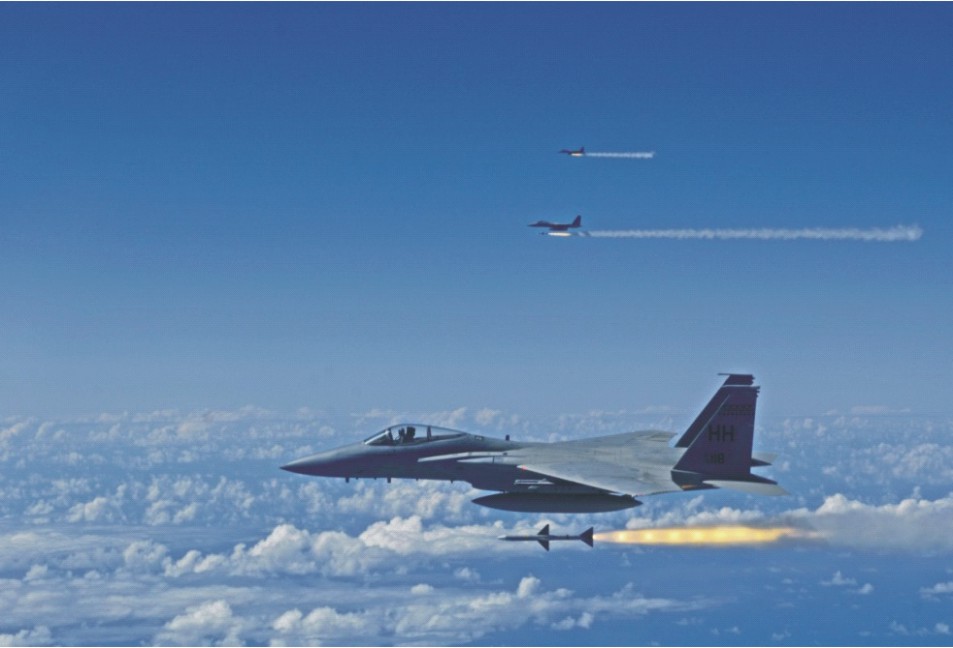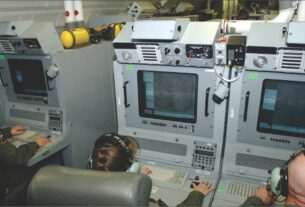Finding targets
In the aftermath of Kargil conflict, Indian defence research has seen some remarkable product development like the BFSR and the WLR and will help Indian Army in sourcing these systems indigenously.
The 740 km Line of Control in the Jammu and Kashmir separating the two parts of J&K and 210 km international border is infiltration prone and the Indian security establishment has been finding it difficult to counter the Pakistani strategy of fighting Indian security forces through their Jehadis who are referred by India as cross border terrorists.
The Kargil incursion jolted the Indian security mandarins and started looking for ways to check cross border infiltration through electronic means.
The MoD had to acquire the BFSR worth Rs 80 crores on an emergency purchase after the Kargil conflict to keep a good watch on the intruders. Thereafter, the government had to import the WLR, to keep a track on the enemy guns, from US-the AN/TPQ-37.
Now Indian defence research has also developed this system and orders have been placed with the Bharat Electronics for 28 WLRs worth Rs 1500 crores.
Advanced systems
However, the technology for intrusion detection is improving very fast and new sensors like the Unattended Ground Systems (UGS) are now being used by the advanced armies of the world.
At present, the market is being dominated by the WLRs and Unattended Ground Systems. On the other hand, the demand for the BFSR continues to be low because of static technology.
Another development has happened in the development of Acoustic Weapons Locating Systems. Though the ASWs have a limited demand they can improve the capabilities of the WLR devices and thus will generate some demand from those who possess the WLRs.
As the utility and importance of network centric warfare increases, the armies world over will look for an integrated WLR and ASWs.
Meanwhile, the Europeans are putting greater focus on the development of radar and sensor systems which will provide network friendly solutions.
The Europeans have developed the Land based Intelligence, Surveillance, Target Acquisition, Reconnaissance (ISTAR) system which is an integrated ground surveillance system.
The armies are increasingly getting interested in this system which may prove to be the future product in the sensor market.
But for now Indian Army will have to rely on the indigenous BFSRs. The Indian BEL developed BFSR can be carried manually because of its light weight, around 30 kg.
This is operated by battery and manned by two or three crew. This radar is fully coherent Pulse Doppler radar. Because of its low peak power of 5 watt it provides low probability of interception by enemy sensors.
This radar can be operated in all weather day and night. The system includes a mounting tripod, an antennae and electronics assembly. The radar can identify and classify the target automatically by using Doppler target classification.
The design and development of the BFSR was started by the Electronics Research and Development Establishment (LRDE), a DRDO unit, after the review of the shortcomings in Kargil operation in 2000.
Besides, the BEL has also successfully developed the task of handing over the Weapon Locating Radar to the Indian Army last year, while the basic prototype of this was first developed in 2003 and first displayed in 2007 in the Aero India exhibition.
This radar can help track the enemy guns and counter fire within seconds. Indian Army was looking for this system way back in mid eighties after India acquired the Bofors Howitzers from Sweden but could not succeed.
The American radar AN/TPQ-3637 was evaluated in 1989 but the US Administration then stopped the sale of this radar to India.
Once again in 1995 the Indian Army floated a global RFP for the WLR and the US Raytheon (then Hughes) was among the five respondent but the process could not move forward because of May 1998 nuclear tests.
However, Pakistani army was already equipped with the American AN/TPQ-37 radar which gave them great tactical advantage over the Indian Army during the Kargil conflict.
In 2002 the US Administration once again started embracing India in military field and offered the sale of the WLR AN/TPQ-37 to India to which India readily agreed under the Foreign Military Sales program of the US Administration.
Yet, the Indian DRDO also simultaneously initiated the design and development of the WLR because of available domestic strength in Phased Array Radar.
Indigenous technology
The LRDE in association with the Bharat Electronics successfully developed this system and last year the Army placed the orders for 28 Weapon Locating Radars.
The BEL WLR is a passive phased array radar which has been derived from the Rajendra phased array radar developed for the Akash surface to air missile system.
Scientists said that when the Akash missile was being tested in Balasore Interim Test Range, the engineers noticed that the Rajendra Radar was also able to detect the firing of the artillery shells nearby.
Based on this observation the LRDE scientists decided to go ahead with the development of the WLR.
The Raytheon offered to transfer the technology if India orders the WLRs in substantial numbers but the Indian DRDO expressed confidence over its ability to supply indigenously developed WLRs to Indian Army.
The range (roughly 30 km) and firepower of the LRDE developed indigenous radar will be further improved with new user inputs which is based on two vehicles, as against three of the Raytheon.
A new BFSR radar that offers foliage penetration is also under development by LRDE. The DRDO unit has already started working on a Long Range BFSR.
The Indian Army is currently extensively using this radar in Jammu and Kashmir and also on Bangladesh borders. In 2004, Indian Army had ordered 1176 units worth Rs 551 crores (USD 125 million).
The Border Security Force has also ordered these radars to be deployed on international borders where the BSF had been deployed. The BEL has also got enquiries from many countries as this is said to be cheapest in its class.
With the indigenous BFSR and the WLR Indian Army can boast of a credible intruder detection system in place. India had to face export sanctions on the WLRs when India tested nuclear device in May 1998 and had to face enemy brunt in the absence of this radar during the Kargil invasion.
Now with these two indigenous systems, the Indian Army can deploy them in large numbers along the LAC and the International Borders along the Line of Control in Jammu and Kashmir.
Now with the increasing incidents of incursions along the undefined LAC, the Army will have to consider deploying the BFSRs on the Sino-Indian border also.
The land forces are now putting increased emphasis on the ground surveillance because of rising incidence of asymmetric situations in modern operations.
Now, Indian defence research will have to concentrate on developing the unattended ground systems which are now being currently imported from Israel and the USA.





